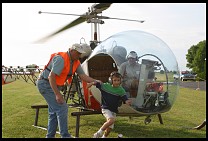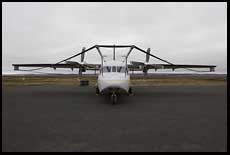

|
Fantasy Airplane Fleetby Philip Greenspun; updated May 2011 |
 I keep this file around for personal reference, listing all of the
airplanes that I would like to own if I had infinite money and a
full-time staff to manage the paperwork and maintenance. I'm not
listing the obvious stuff that truly require infinite money such as a
Gulfstream V or Sikorsky S-76 helicopter. I'm also trying to focus on
things that are reasonably efficient and that won't burn tons of fuel
thereby (indirectly) funding Al-Qaeda.
I keep this file around for personal reference, listing all of the
airplanes that I would like to own if I had infinite money and a
full-time staff to manage the paperwork and maintenance. I'm not
listing the obvious stuff that truly require infinite money such as a
Gulfstream V or Sikorsky S-76 helicopter. I'm also trying to focus on
things that are reasonably efficient and that won't burn tons of fuel
thereby (indirectly) funding Al-Qaeda.
This document is split up into the following sections: (1) aircraft for enjoying the view, (2) aircraft for getting from Point A to Point B, and (3) aircraft for getting into the roadless wilderness (generally float planes).
The Partenavia has 6 seats and can be ordered with bubble windows in the back to improve downward visibility. It would be perfect for a small sightseeing business.
As of 2008, the Royal Aero Club of Western Australia had a non-observer P68 to rent for $294/hour, www.racwa.asn.au.
About $335,000.
The visibility out of a Malibu isn't so bad. The wing is fairly thin and there are no engines poking out in front of it.
Wishlist/checklist for a Malibu: electric flaps rather than hydraulic, windshield with embedded heaters instead of hotplate (can retrofit from Mirage back to Malibu?), vacuum pump STC, IO-550 conversion, insulator blanket (Nomex) for interior, 4-blade MT Prop or maybe the 3-blade composite from Hartzell. Apparently you will be in a world of hurt without the Parker-Hannifin landing gear hydraulics that came out in mid-1986. This makes a late '86 or an '87 or '88 Malibu perhaps the best deal.
Flying magazine's February 2005 issue carried the following: "One pilot, who had been charged with 'lewd and lascivious conduct with a minor,' fell to drinking heavily and spoke of intentionally crashing his Malibu. The next day he did just that, while in radio communication with approach control. He reported descending through 11,000 feet, then through 6,000 just 38 seconds later. He encountered the ground at 4,650 feet."
A Malibu plus a letter from God promising that the engine will never quit is all the airplane that anyone really needs.
[Alternative: Piper Meridian, the same basic airplane with a turboprop engine.]
Alternatives that are flying today: Searey, Zenair CH 701/750 on floats.